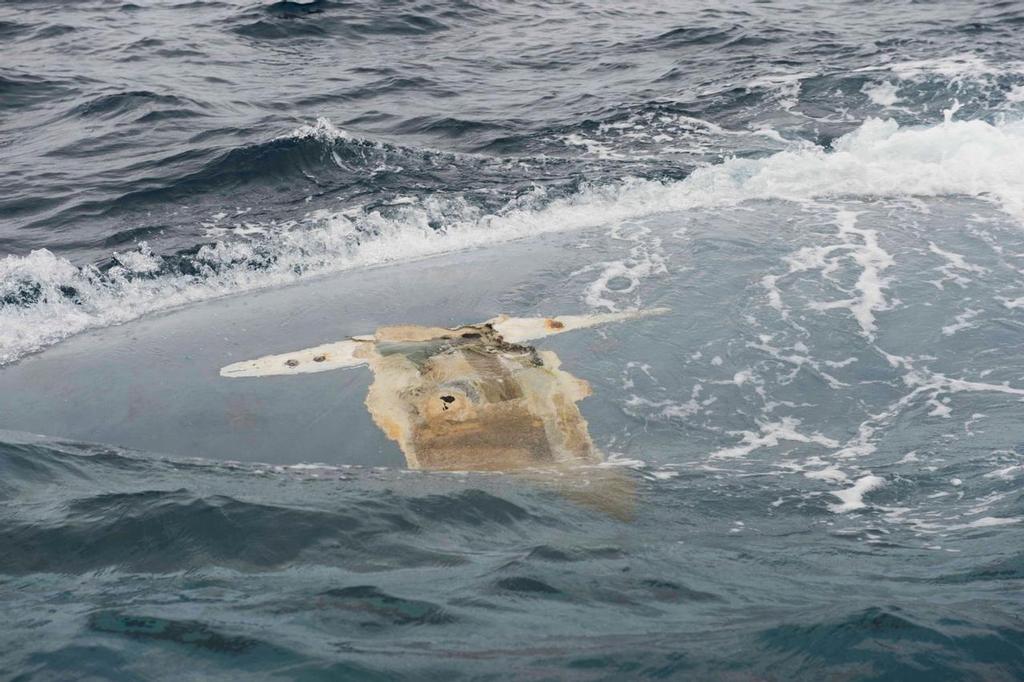Cheeki Rafiki- A UK production yacht builder speaks out
by George Stead on 6 May 2015

Cheeki Rafiki - close up of sheared keel bolts - including corroded after keel bolt US Navy
George Stead operated the Southern Ocean Shipyard in Poole England for many years. They built the first large production yacht, the 30ft Pionier 9 in 1959 (Yes, that is the correct Dutch spelling).
The yard built a production ocean racer the Excalibur 36, an all fibreglass yacht with and encapsulated lead keel with no keel bolts (no problems with keels falling off). The standard production boat won the 1963 1964 and 1965 RORC Championship. The yard went on to build one of the largest production maxis - the Ocean 70. Southern Ocean Shipyard built 34 Ocean 60's, 21 Ocean 70's and 11 Ocean 80's.
He writes:
The Cheeki Rafiki accident to me was very simple, the keel broke off due to the modern way keels are being fitted.
No crew sailing across the Atlantic in a modern Cat 1 yacht should expect the keel to break off even if it hits or had hit something previously.
I was responsible for designing and attaching over three hundred keels on yachts during the 70 and 80's without the aid of a computer but using common sense without all the technical rubbish that written these days.
Once attached my keels will not come off even with the nuts released !
Today it seems that problems with keels is an accepted part of yacht ownership.
My attitude is that even if a yacht was wrecked the keel should still remain attached to the hull structure.
The modern method of only bolting the keel through the hull and not through the keel floors is where the problems start. Transferring the load from the hull to the keel floors or the interior structure which is usually only bogged is difficult to monitor.
The hull to keel joint now seems to have become a flexible joint with silicon type sealants having to be used which only adds to the problem. Fitting a keel should be like fitting a cylinder head on an engine, a completely solid joint that cannot move.
All my keels were fitted with a gasket of 1oz grp mat and resin. The keel then bolted tight. After which pairs of nuts were released and the gaps round the bolts in the keel floors flooded with resin. It is impossible for the keel to be taken off unless this added resin is released from the bolts.
With all the modern bureaucratic rules and regulations and still this sort of accident can happen. The loss of lives occurred not due to the stowage of the life raft but because the keel broke off.
I recently spoke to an experienced friend who was helping to sail a modern yacht north from Spain across Biscay and luckily turned back after finally deciding the leak was coming from the keel bolts. He said it was difficult to find where the water was coming in, as the bilge was flat and water was covering the keel bolts.
The boat was 6 months old and none of the crew initially considered the problem was the keel. The keel had to be refitted in Spain before the yacht could sail north.
With all the new rules and regulations, how can the keel break off a CE Cat 1 yacht ?
Somebody should be held to account.
If you want to link to this article then please use this URL: www.sailworldcruising.com/134063